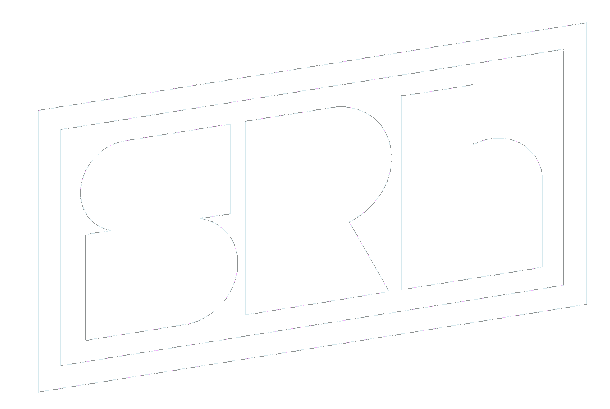The right campaign can turn everything around, part 3
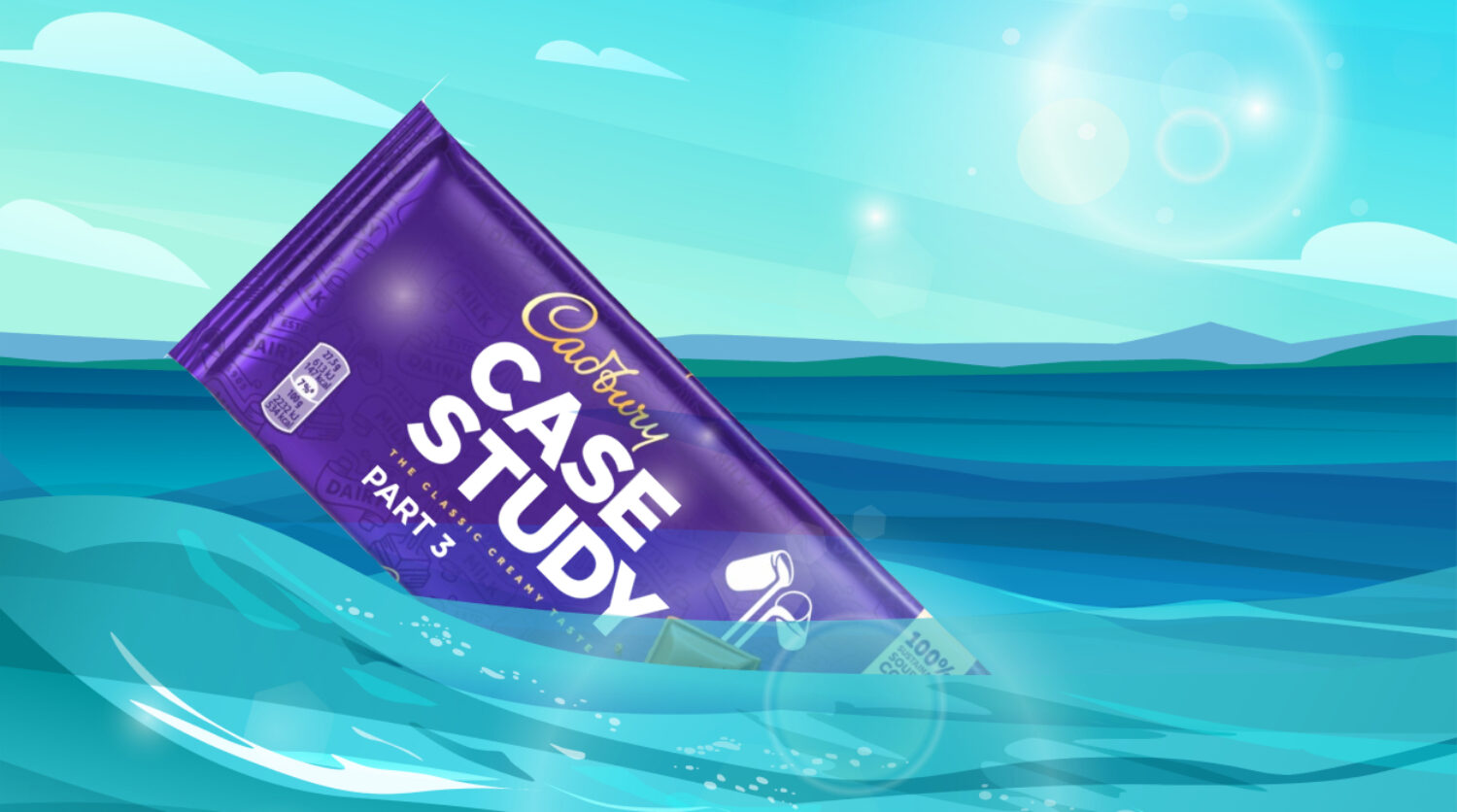
What do we mean by “effective”?
If you’re ever swimming in the ocean, and you find yourself being pulled out to sea … don’t panic. You’re trapped in a rip current. Don’t try to swim against it.
Instead, catch your breath … and then swim parallel to the shore. Because the safest thing to do in that moment is to head in a different direction.
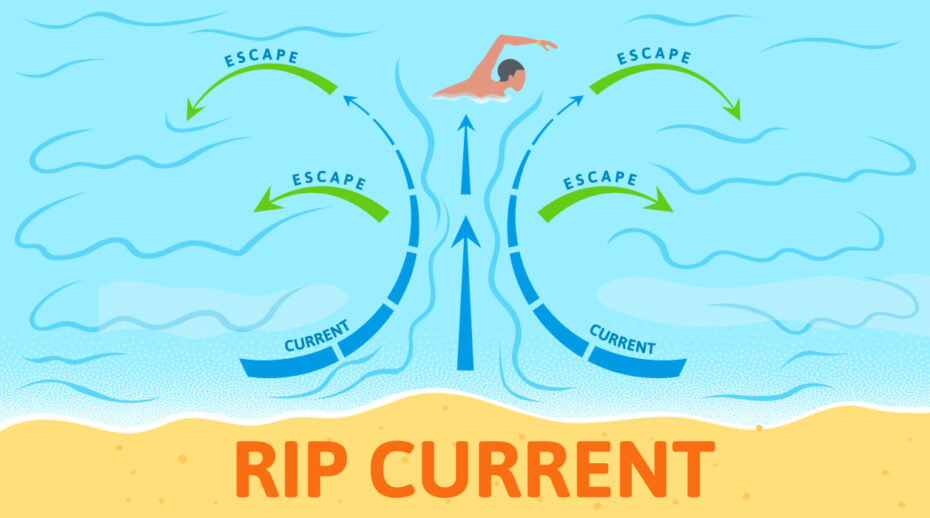
Declining sales. A loss of market share, mental availability and overall pricing power. Increasingly negative public perception.
That was the current Cadbury had been swimming against for a decade. But they were about to launch a new campaign with three objectives:
Re-establish Cadbury as a “fabric-of-the-nation brand”
Grow sales of their flagship product, Cadbury Dairy Milk, by 9%
Reverse declining market share and grow annual sales within five years.
And they weren’t going to spend their way out of the problem.
Unlike cosmetics brand e.l.f., which grew from $250 million to $1 billion in part by increasing their comms budget from 6% to 25% of revenue, Cadbury already had a robust media spend.
In fact, Cadbury’s Share of Voice (SOV) fell by 2% during the first few years of the campaign. In other words, they spent 2% less on media relative to their category competitors.
So did the “There’s a glass and a half in everyone” campaign work? Let’s look at some of the numbers.
Market share
In 2017, Cadbury’s market share was 31% and falling. By 2020, it was up to 35%. The entire category grew, but Cadbury grew faster.
Sales
The goal was +9% in five years. They achieved +15% in three years.
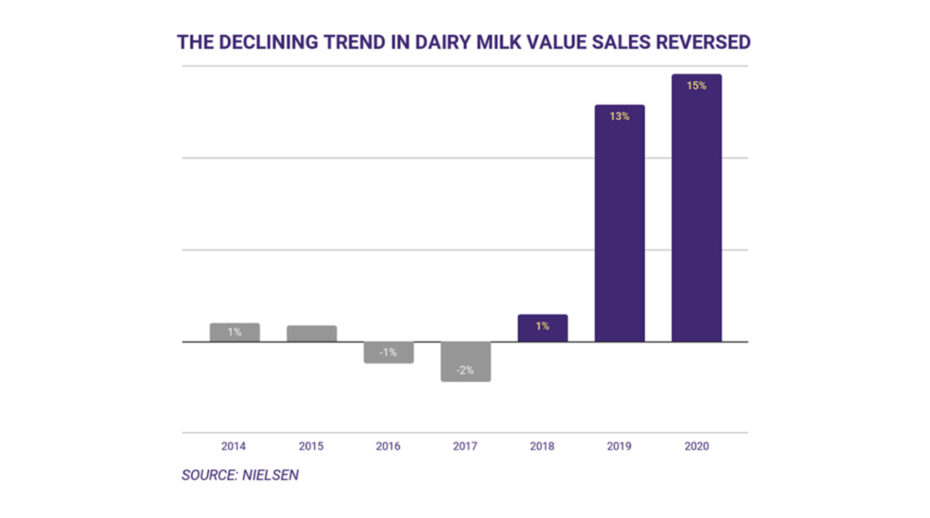
Source: “Results and a half: How generosity paid off for Cadbury” – WARC
Market penetration grew from 66% to 74%.
Price sensitivity
The number of Cadbury products sold at full price was up 9%.
So the campaign surpassed its sales and market share goals. Did it repair at least some of the damage caused by Kraft’s hostile takeover?
Yes, and then some.
Public perception as a "brand that brings people together” jumped from 40% to 71% in three years.
Each year, market research company Savanta releases a list of the 100 most loved brands in the UK. In 2018, Cadbury wasn’t even on the list. By 2021, Cadbury was #3 overall and #2 with 16-24-year-olds.
Perception of quality (an unexpected bonus!)
In 2018, 29% of people said Dairy Milk was a high quality chocolate bar.
By 2021, that number grew to 37%.
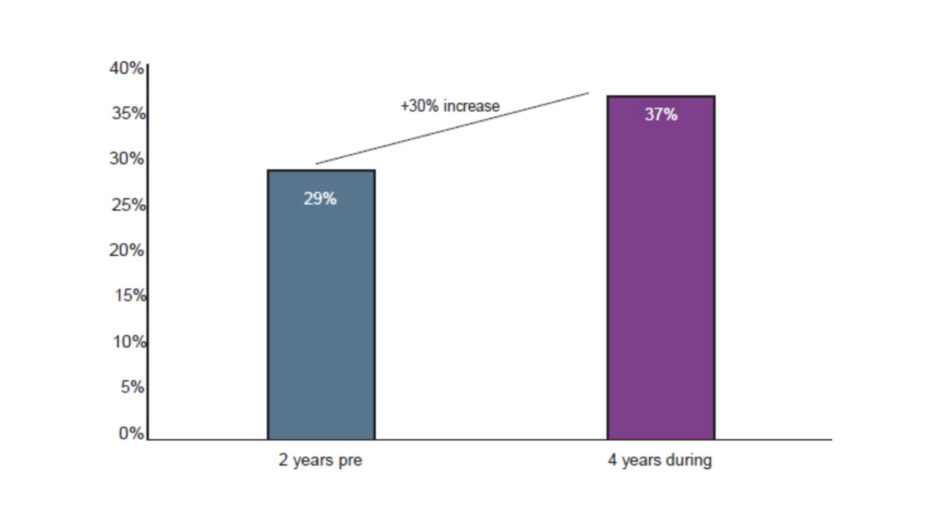
Source: “Results and a half: How generosity paid off for Cadbury” – WARC
Perception of taste
In 2018, only 40% of people “loved the taste” of Cadbury Dairy Milk.
By 2021 that number grew to 82%.
By the way, Cadbury had not changed the recipe, so it’s the same chocolate. The only difference was the campaign.
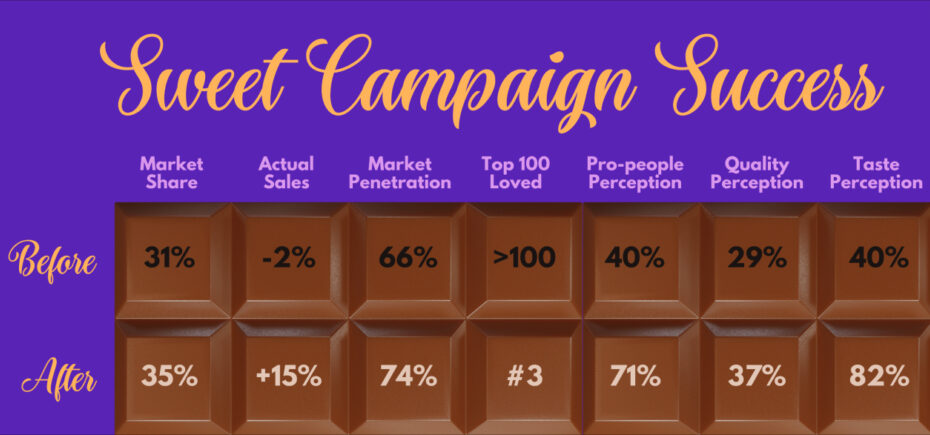
So what can smaller brands learn from this?
Find a meaningful, ownable category entry point like, “There’s a generous instinct in all of us.” It can lead to some deeply engaging and effective work.
Keep your messaging tightly focused. One if possible. Three at most.
Build an emotional connection with your audience through simple, powerful stories about people. It’s certainly not the only way to go, but it’s a really good way to go.
Long-term, emotional brand-building campaigns can absolutely have a positive impacton your company’s P&L statement.
Cadbury is a very large, very famous UK brand that has been around for a long time. They have spent the last 200 years building mental availability.
But even a brand like Cadbury needs to engage and connect emotionally with the audience.
And here’s the fun part … an effective campaign does not cost more than a dull campaign, but it does a hell of a lot more work.
Cadbury had been flailing for a decade — trapped in a current of sameness, of boring, of short-termism.
Eventually, they caught their breath and took a look at what the entire category was doing, including themselves. And then they went in a completely different direction.
It paid off.
We’ll see you next time.
Sources!
“Results and a half: How generosity paid off for Cadbury” – WARC
“Cadbury ‘There’s a glass & a half in everyone’ – how intrinsic purpose can transform a brand’s fortunes” – WARC
